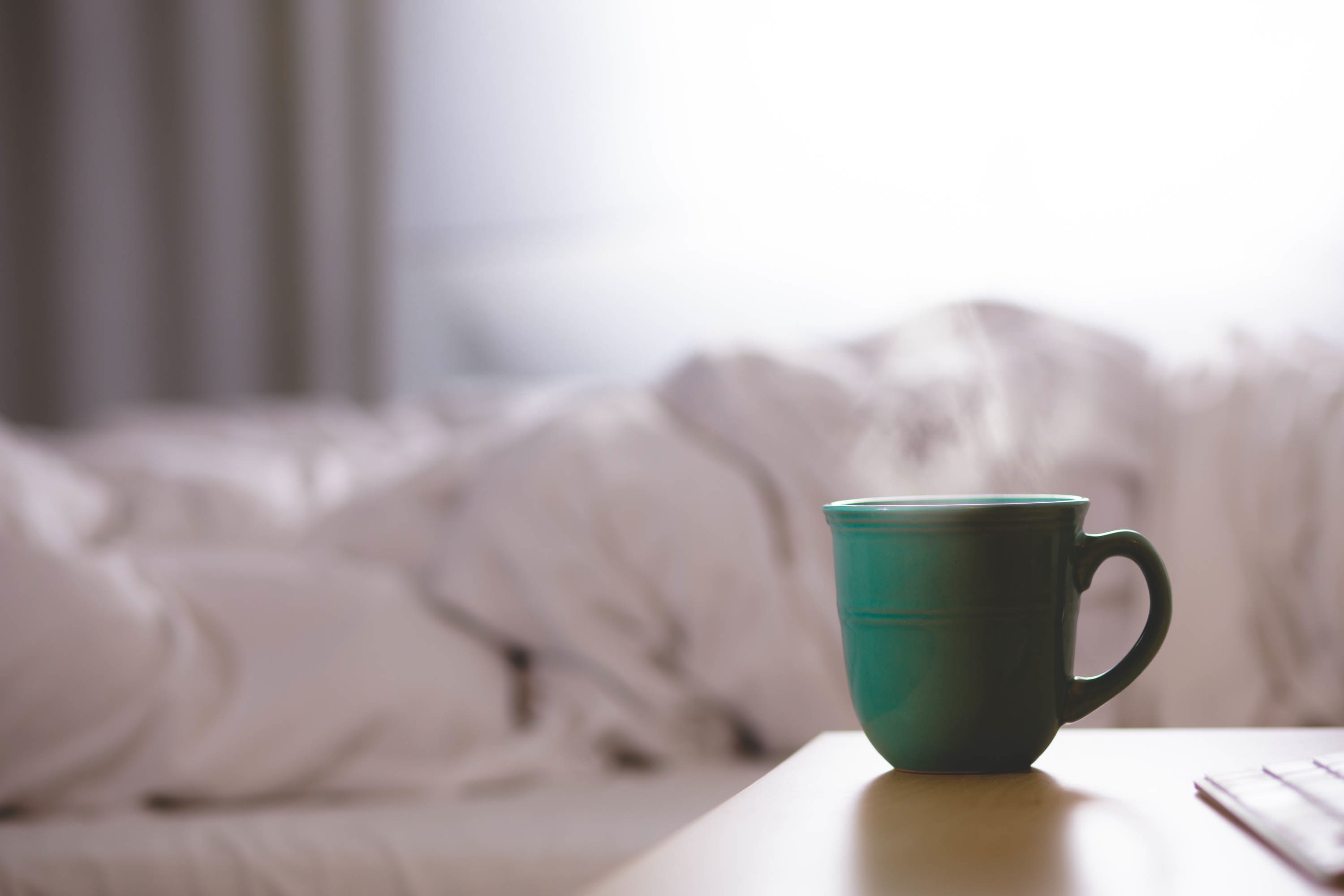If you’re going to choose one room in your house to detox, it’s a good idea to start where you sleep. The body does important rejuvenation, repair, and detoxification work when resting. But if the environment you sleep in is toxic, you’re adding unnecessary work to the load, limiting the body’s innate ability to preserve our health and prepare us for the new day ahead.
Babies and children are particularly vulnerable to toxic chemicals in this regard. They sleep more than adults to support their rapid mental and physical development; combined with the fact that exposure to toxic chemicals during these critical windows of development can be detrimental, it’s important that babies and children are sleeping on safe surfaces.
Common Toxic Chemicals in Bedding

Mattresses:
Mattresses all have the same basic overall structure which—according to The Mattress Matters report from Clean and Healthy New York—may contain chemicals of concern in any of the four layers:
Core:
Polyurethane foam, also appearing as “memory foam” or “soy foam,” is made with a potentially cancer-causing chemical, and may emit VOCs. VOCs can also be found in synthetic latex foam, which can irritate eyes, nose and throat, cause headaches and are linked to cancer.
Padding:
Polyester is often used for padding, which is a petroleum product that may contain hidden additives and contaminants.
Flame retardant material and chemicals:
Studies show that these toxic chemicals appear immediately in the bloodstream and urine, and have linked flame retardants to long-term impacts like endocrine disruption, lower IQ, ADD, fertility issues, thyroid disease and cancer. They are heavy polymers and wind up in common household dust; they’re inhaled and consumed and then stored in our fat, and they bio-accumulate and increase through the food chain.
Cover or “ticking” (crib mattresses):

This layer is often made of vinyl, used as a waterproof cover. Vinyl relies on many toxic chemicals throughout its production, including cancer-causing chemicals, asthma triggers, and developmental toxins.
Pillows:
Pillows can also be made out of polyurethane foam that’s coated in flame retardants. In addition to the health hazards of flame retardants listed above, studies are showing that these added chemicals are not even effective in preventing or slowing fires.
Sheets:
Sheets that are labeled “wrinkle-free” are finished with a chemical process that includes formaldehyde. This chemical is linked to short-term health problems like skin irritation and respiratory problems. In the long term, formaldehyde is linked to cancer, and listed as a known human carcinogen by the National Toxicology Program.
Detoxing the Bedroom
- Avoid mattresses made with materials and chemicals such as polyurethane foam and chemical flame barriers or other flame retardant chemicals, formaldehyde, pesticides, glues or other chemical adhesives, and GMOs.
- Avoid mattresses made with potential allergens like latex or soy (including so-called soyfoam or ecofoam).
- Look for mattresses that are waterproofed with food-grade polyethylene which meets FDA food-contact standards, and not with vinyl or perfluorinated compounds or other questionable materials.
- The healthiest mattresses are made with organic cotton, organic wool, organic latex, and individually encased coils.
- Look for all bedding, including sheets, pads, toppers, blankets, comforters, etc., made from natural fabrics like organic cotton and wool that are free of harmful chemicals.
- Open the windows in your bedroom for a minimum of ten minutes prior to sleep to reduce any build-up of volatile organic compounds (VOCs) that may exist in the room due to off-gassing from any of the chemicals mentioned above.
- Look for the MADE SAFE seal:
- Naturepedic and Lullaby Earth are the first mattress companies to certify all of their mattresses as MADE SAFE. This means that they don’t contain any materials or components that are known carcinogens, behavioral, developmental, reproductive, and neuro toxins, hormone disruptors, heavy metals, high-risk pesticides, fire retardants, GMOs, toxic solvents, or harmful VOCs. They also aren’t made with materials that bioaccumulate (build up in our bodies), persist in the environment (don’t break down) or are toxic to aquatic life.
Read the original story on MadeSafe.com











